We visited the Hunter Valley where I grew up last week to catch up with relatives which was really great, however I did not expect this amazing treat.
My cousin Brian had pulled this strange object out of the ground where we/they used to live in Tenambit (Maitland) when he was circa 8 years old. At the time it had a calf tied to it with a rope.
At first he thought it was a rusty piece of pipe (as you would expect – you can still see the hammer marks on it where it was driven into the ground) then he noticed the sight attached to it and realised it was a gun barrel.
He asked his father what it was and was told it used to be his father’s Boer War rifle, ie Brian’s and my grandfather’s rifle. Brian has carried this piece of pipe around now for 69 years but has performed some truly astonishing detective work and gunsmithery with it.
He brought along all these wonderful (fully licenced) objects to show me. The barrel was originally a Snider-Enfield .577 calibre (breech-loading) rifle converted from an earlier percussion style muzzle-loader in the same calibre.
They hacksawed a breech out of the sturdy barrel welded a hinge to it and converted the muzzle-loader to a breech loader by adding a rolling block.
The version Brian has made/restored is a (shortened) cavalryman’s weapon meant to be carried in a short leather boot or scabbard. My grandfather, George was a a member of the Hunter Valley Lancers, ie mounted infantry, the forerunner of the Australian Light Horse made famous for their feats at Gallipoli and later Beersheba. See Ion Idriess’ extraordinary (war diary) account of it ‘The Desert Column‘.
Here is a photo of George in his uniform ready to go off to the Boer War:
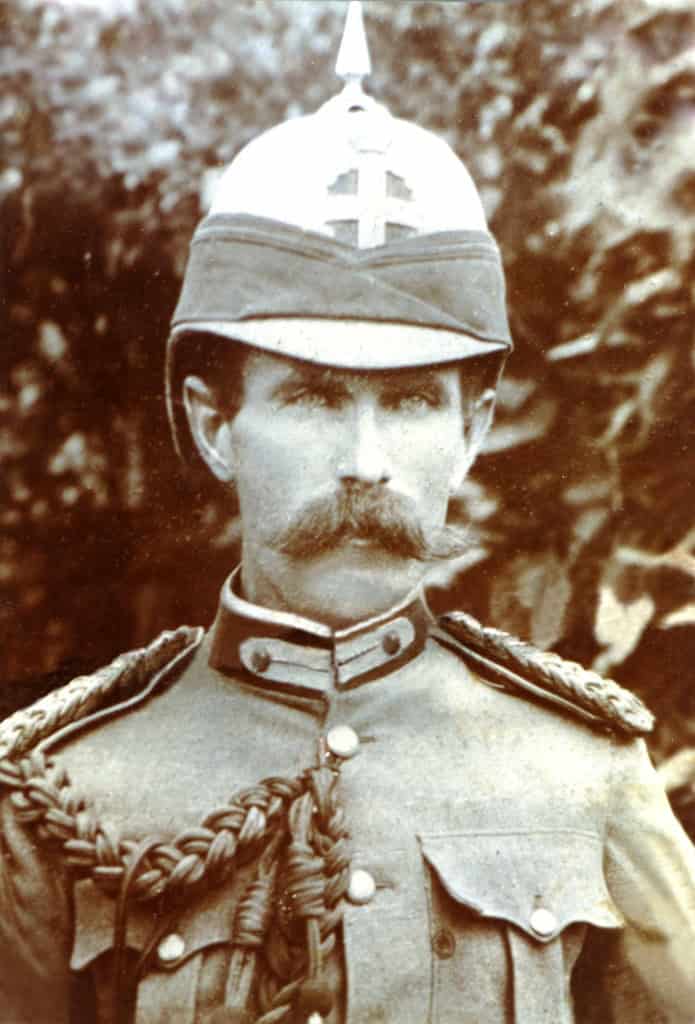
See the hammer marks where it was driven into the ground?
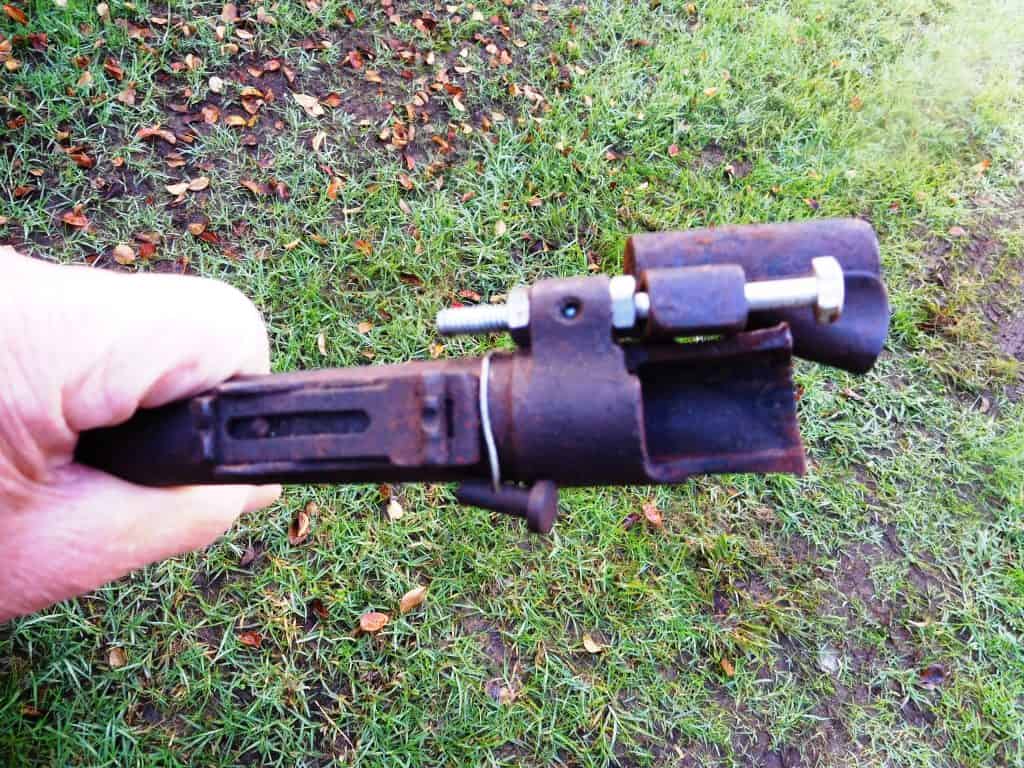
Brian has ‘found’ a rolling block and (loosely) attached it with a bolt to show how it all goes together.
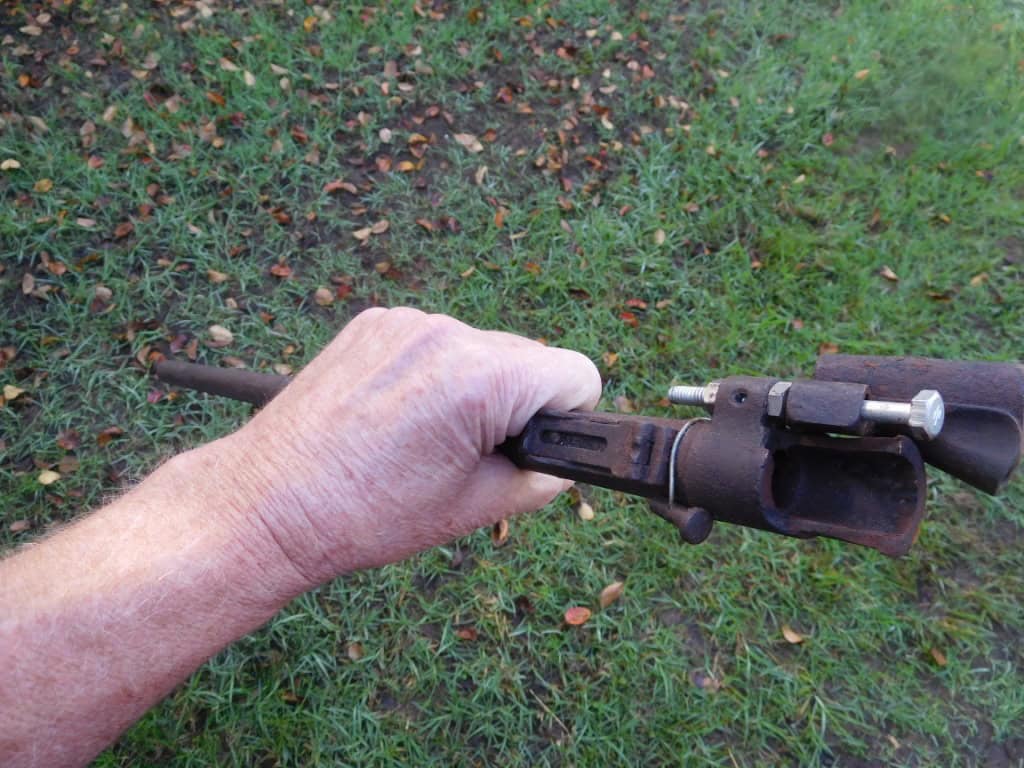
Here is the barrel and the completed rifle.
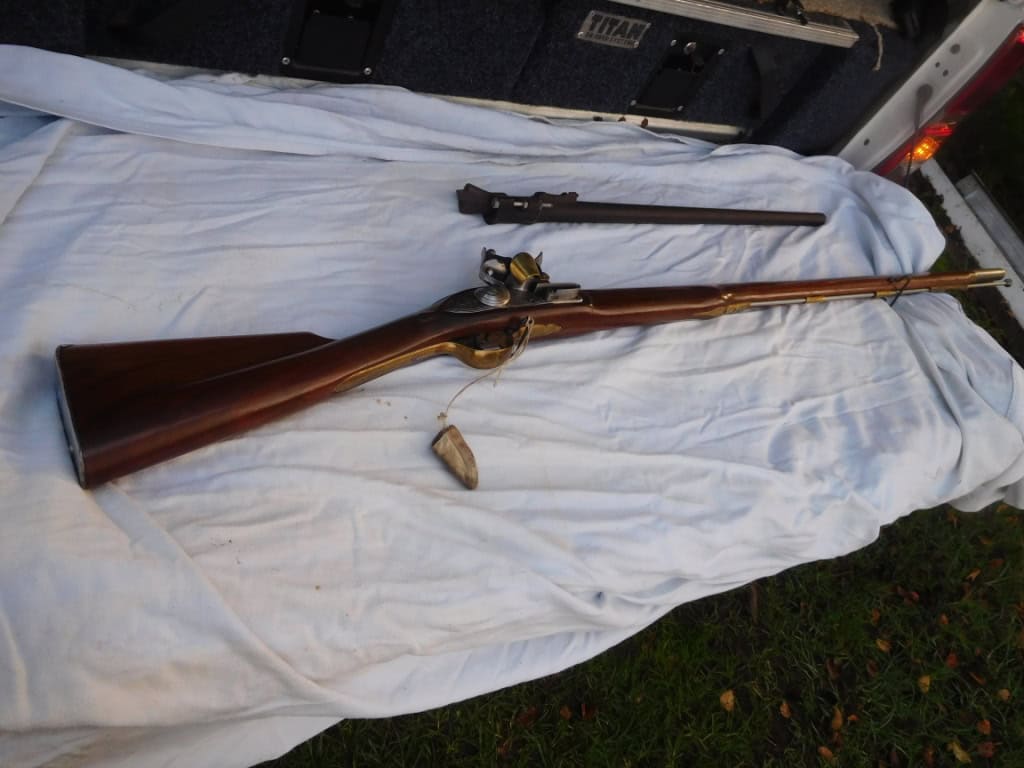
This is a cut-down 24 gauge shotgun shell which will fire through this antique firearm (loaded with black powder, not modern powder) – available from Brazil apparently.
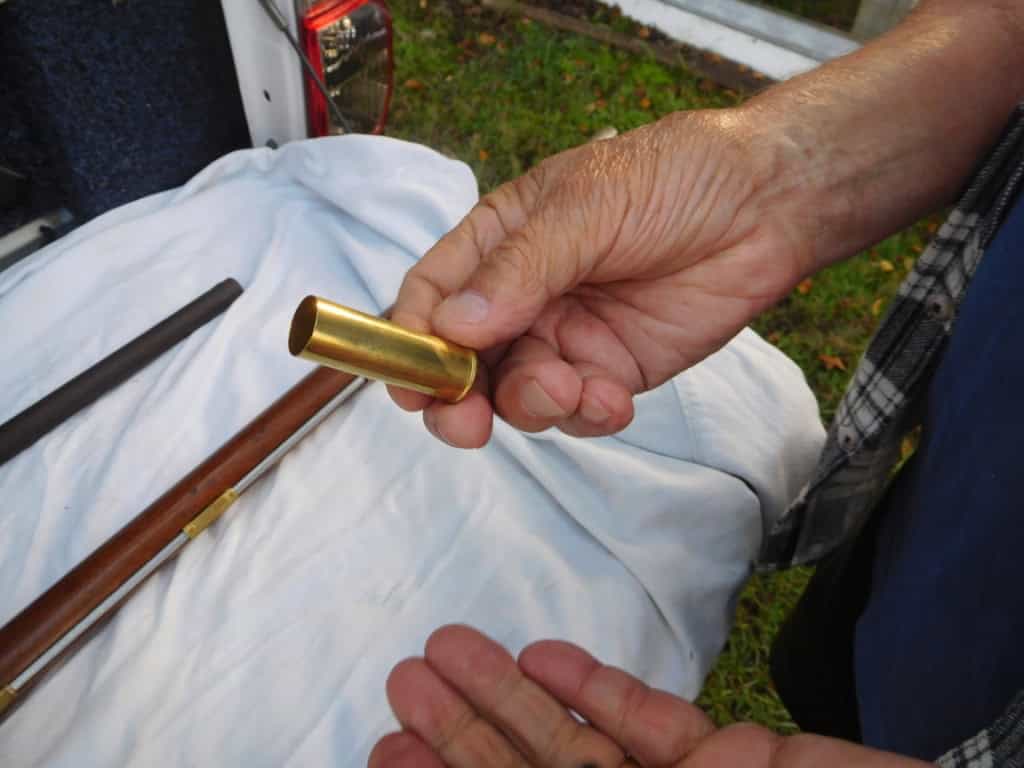
A nasty piece of lead! The “Brown Bess’ in the background, standard issue for the British army for over 100 years until replaced by these ‘percussion’ forearms – see how much longer than the tailgate of the vehicle it is.
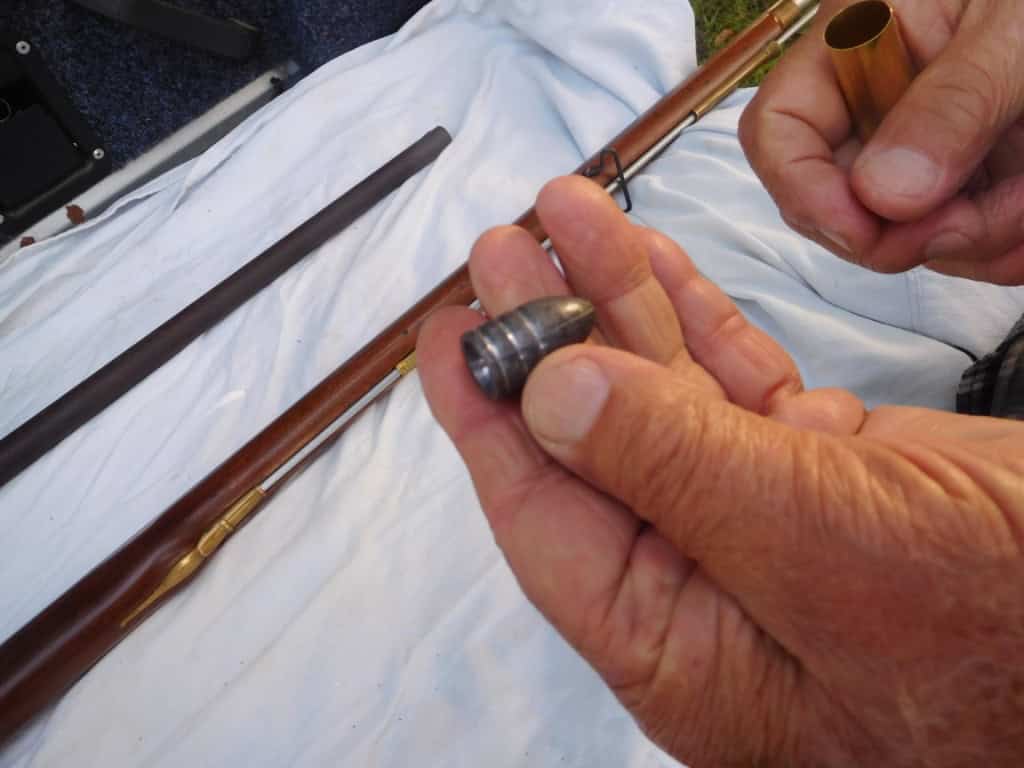
The two actions side by side.
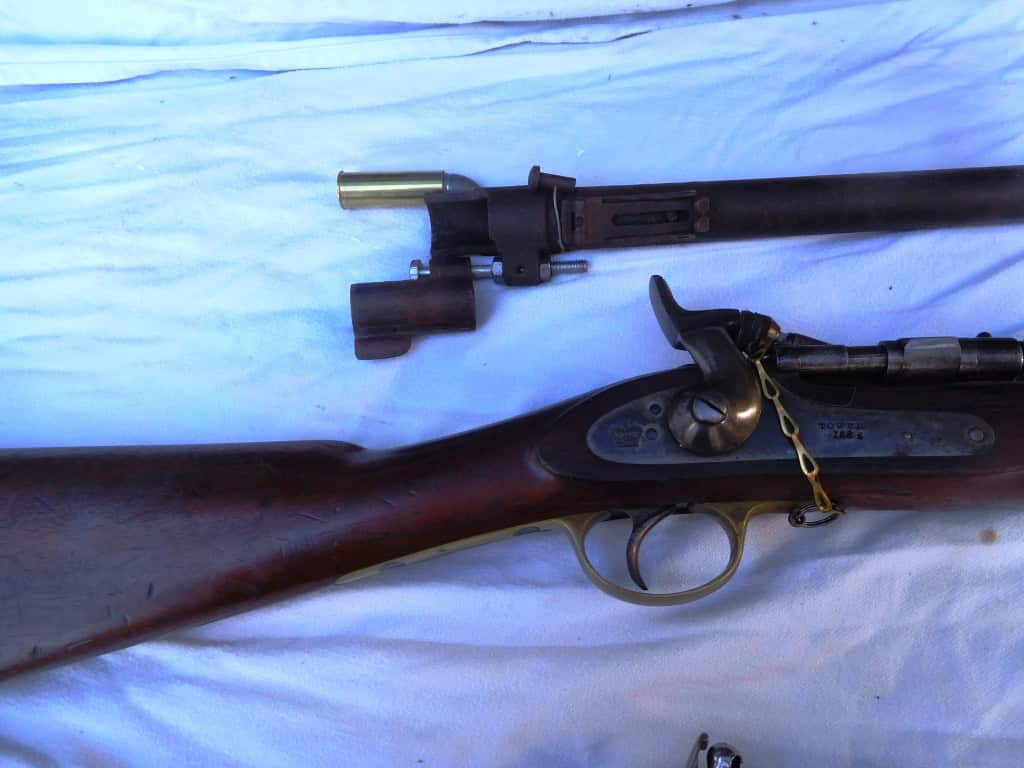
An identical weapon to this Brown Bess (below) would have been carried by Della’s great great-great grandfather who was an officer on the First Fleet (and in other military engagements such as the Kandy War)
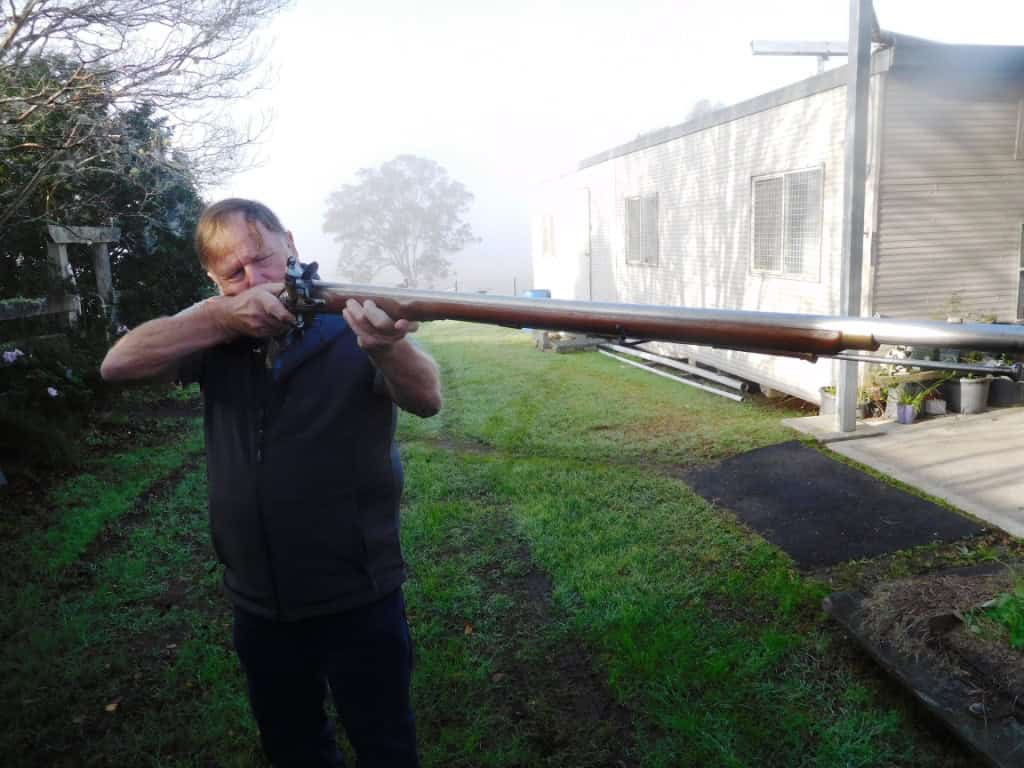
Me trying it out on a (pretend) Boer or two.
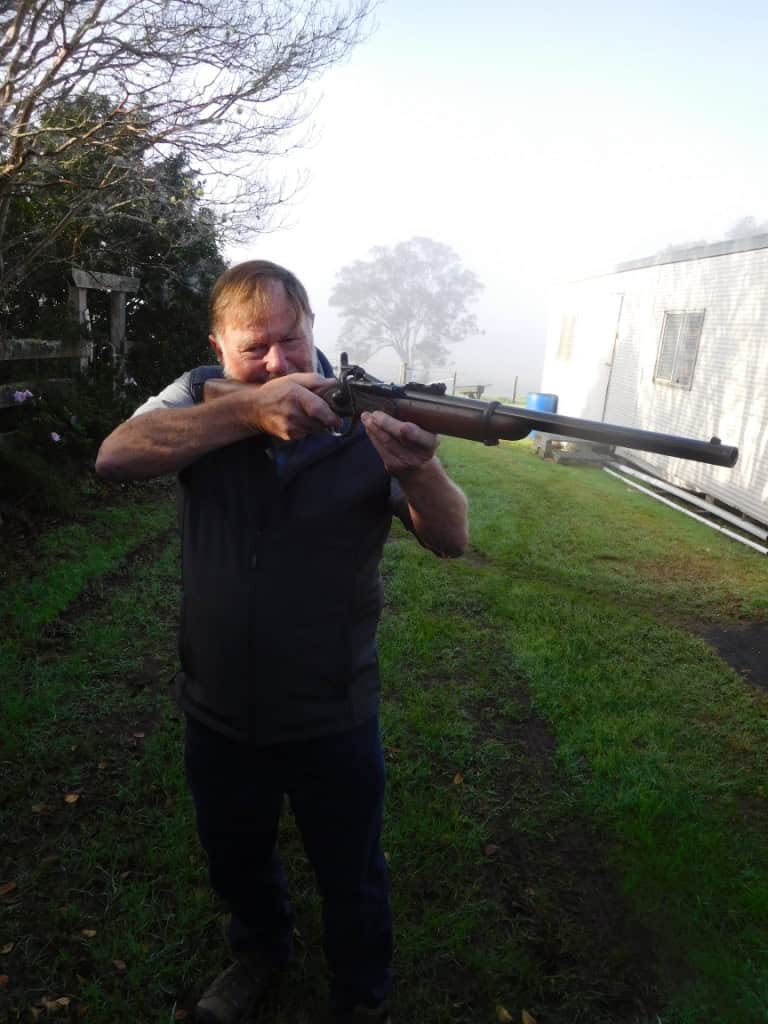
Della holding another version of it.
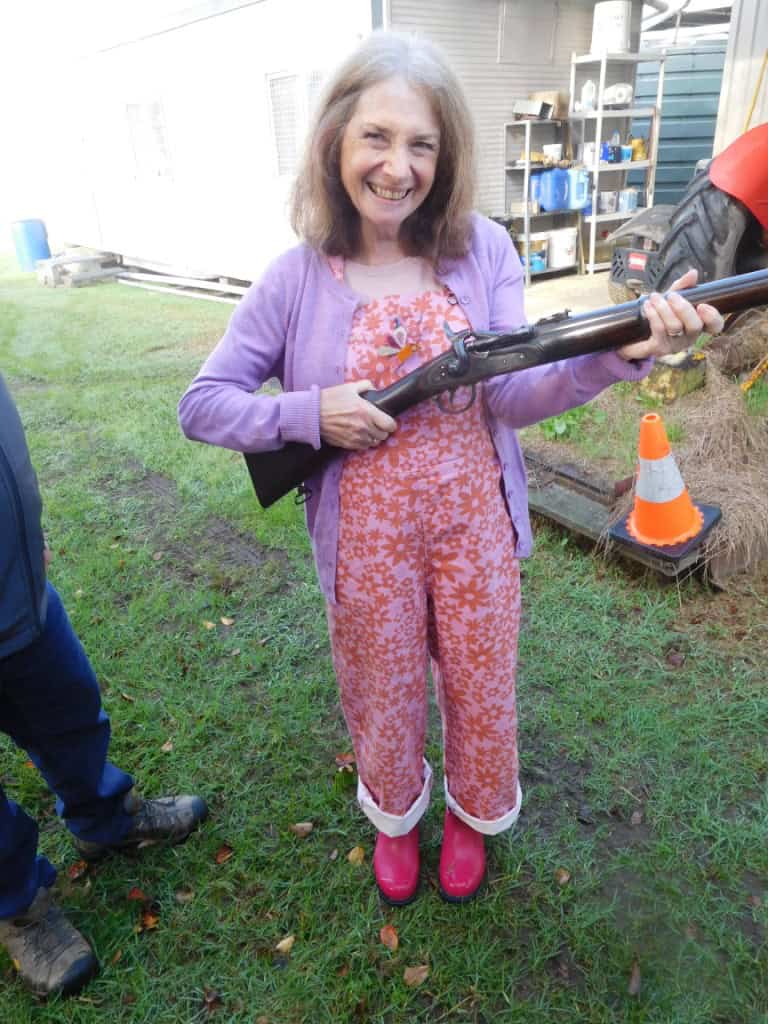
Just wow!
For those who want more information: (Brian) “The Snider was a conversion of various Marks or Patterns of the .577 cal percussion Enfield- Pattern 53 (3 barrel bands), Pattern 58 (2 band/naval rifle) and Pattern 61 Artillery Carbine (Muskatoon), and various cavalry and yeomanry carbine conversions made later, usually from the 3 band p53 to make up numbers as they slowly brought in the .577-.450 Martini rifle (.45 bullet in a necked down .577 case).
The Mk1 Snider was made by simply cutting out a piece of the barrel and welding the bolt fitting on the side. This was short lived. The Mk 2 and 3 had separate actions (called action shoes) which were screwed onto shortened and threaded existing barrels.
Very little else was changed from the original rifle allowing cheap and quick conversions from muzzle loading to breech loading while the Brits were building a completely new Martini rifle. ‘George’s’ Yeomanry carbine shown was made originally in 1860 as a 3 band, 3 groove, 39in barrel muzzle loading P53, converted to Snider 1867-1870, then shortened in about 1885.”
Brian again, “about George- If he had gone off to the Boer War he would have carried some version of the Lee Enfield rifle- I haven’t seen any references to Sniders being used there. The Snider was much more likely to have been issued as purely something carried by the Lancers in Oz due it’s handy size, even though it was long obsolete by 1900. Many of them ended up being condemned by 1900 and issued to school cadets for drill purposes, before .310 Martini Cadet rifles were issued- my Martini is stamped ‘NSW- 1912’ on the butt. If it is George’s Snider, I wonder how it ended up in his possession”

Fantastic story here Steve, Im sure this made the trip even better after catching up with your Relatives.
I really enjoyed meeting you and Della and the Jones Boys.
Ross
Thanks Ross. Hope to catch up with you all again in the future. Cheers, Steve & Della.